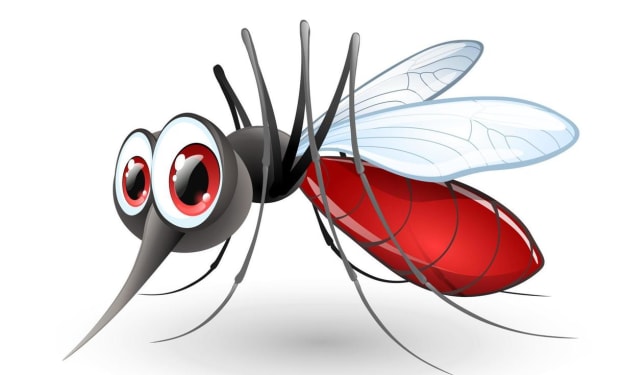Spark Creativity and Get Unstuck: The Subtle Art of Taking a Break
Trying too hard can sometimes be part of the problem

Pushing harder is what most of us do when we get stuck.
We squeeze our brains more, believing that forcing our way through frustration will help us move forward — whether in solving a difficult math problem, or learning to play a new song on a favorite instrument, or making sense of a messy draft.
Barbara Oakley, author of A Mind for Numbers, says “trying too hard can sometimes be part of the problem.”
One reason for this is the Einstellung effect, a phenomenon when “an idea you already have in mind, or your simple initial thought, prevents a better idea or solution from being found.”
This is why pushing harder doesn’t help much.
You’ll just circle around with the same options that are either flawed or inadequate to solve the problem. It’s tempting to try harder, because there’s an illusion that we’re making progress.
We’re doing something, we’re being persistent.
But doing the same things over and over again and expecting a different result is a recipe for frustration. After all, you’ve already exhausted all the options: Option 1, doesn’t work. Option 2, doesn’t work again. Option 3, nope.
If existing solutions don’t work, no amount of going back and forth between them will solve the problem. You need to explore other options, which is only possible if you turn off the focused mode and start to look at the bigger picture.
This is when the diffused mode of thinking comes into play.
The Mighty Diffused Mode
“If you are trying to understand or figure out something new,” Oakley writes, “your best bet is to turn off your precision-focused thinking and turn on your ‘big picture’ diffuse mode, long enough to be able to latch on to a new, more fruitful approach.”
To turn on your “big-picture” diffused mode, Oakley suggests taking a break.
Here’s why:
1. Taking a break helps us break free from fixating on “first-level” thinking, which allows us to see and consider more options available to us — then we can choose the best among them.
Cal Newport writes:
“For decisions that involve large amounts of information and multiple vague, and perhaps even conflicting constraints, your unconscious mind is well suited to tackle the issue.
UTT (Unconscious Thought Theory) hypothesizes that some regions of your brain have more neuronal bandwidth available, allowing them to move around more information and sift through more potential solutions than your conscious centers of thinking.”
2. Taking a break replenishes our ability to concentrate and make good decisions.
Long hours of focused thinking can result in attention fatigue. And because our ability to direct our attention is finite, the longer we stay in a high-attention state, the more exhausted we become — and so the more we struggle to concentrate.
Every micro-decision we make eats up a pie of our willpower. The more tired we are, the less are the quality of choices we make.
If we want to have the ability to make the best choices, and if we want to have the ability to see all the best choices, we should consider taking breaks and turning on diffused mode.
Effective Ways to Turn on Diffused Mode
Diffused mode’s wonders will only work if you’ve done your focused work beforehand.
So wrestle with the problem first.
Then when you feel frustrated or overwhelmed, take it as a signal to step back and turn your attention away from the material — this allows the diffuse mode to work in the background.
“The key is to do something else until your brain is consciously free of any thought of the problem,” Oakley writes.
Here are some activities to activate your diffuse mode:
1. Walk with nature
Spending time with nature, like walking in the woods, improves your ability to concentrate.
“When walking through nature,” writes Cal Newport in Deep Work, “you’re freed from having to direct your attention, as there are few challenges to navigate (like crowded street crossings), and experience enough interesting stimuli to keep your mind sufficiently occupied to avoid the need to actively aim your attention. This state allows your directed attention resources time to replenish.”
This is why, in a podcast with Ryan Holiday, Cal said he loves walking in the woods whenever he tries to figure out things, especially when he’s thinking or writing.
2. Sleep
“Sleep is the ultimate diffused mode,” Oakley writes. “Sleep is probably the most effective and important factor in allowing your diffused mode to tackle a difficult problem.”
Consider this excerpt from a scientific journal:
“REM sleep is important for assimilating new information into past experience to create a richer network of associations for future use. Fluid interpretation is a hallmark of a creative mind, from idle wordplay to the abstraction of shapes that led to the solving of neurochemical transmission or the structure of the benzene ring.”
Sleep has two stages, the dreamless (non-REM) and the dreaming (REM) stage.
The dreamless stage helps our brain to string new information to what we already know, cementing the new information to the tapestries of our memory.
The dreaming stage, on the other hand, helps our brain to discover similarities between unrelated ideas, weaving new connections which can lead to original insights.
3. Shut down ritual
In his book Deep Work, Cal Newport shared how he ends his workday with a ritual.
“The first thing I do is take a final look at my email inbox to ensure that there’s nothing requiring an urgent response before the day ends. The next thing I do is transfer any new tasks that are on my mind or were scribbled down earlier in the day into my official task lists. (I use Google Docs for storing my task lists, as I like the ability to access them from any computer — but the technology here isn’t really relevant.) Once I have these task lists open, I quickly skim every task in every list, and then look at the next few days on my calendar. These two actions ensure that there’s nothing urgent I’m forgetting or any important deadlines or appointments sneaking up on me. I have, at this point, reviewed everything that’s on my professional plate. To end the ritual, I use this information to make a rough plan for the next day. Once the plan is created, I say, “Shutdown complete,” and my work thoughts are done for the day.”
No more work-related thinking after the shutdown ritual.
No checking of emails, no thinking of work-related problems, or planning how you’ll handle an upcoming obstacle.
“If you keep interrupting your evening to check and respond to email,” writes Cal, “or put aside a few hours after dinner to catch up on an approaching deadline, you’re robbing your directed attention centers of the uninterrupted rest they need for restoration. Even if these work dashes consume only a small amount of time, they prevent you from reaching the levels of deeper relaxation in which attention restoration can occur.”
“If you want to feel recharged each day, you have to learn how to turn your brain off. Give 100% of your effort when you’re on, and then relax 100% when you’re off.”
- Anthony Moore
4. Other forms of rest
What if you only have a few minutes, like 10 to 20 minutes, of rest?
The following are some activities you can do during your brief blocks of break:
• Exercise (or stretch)
• Read a relaxing, familiar book
• Listen to music
• Play songs you know well on a guitar, keyboard, etc.
• Have a casual conversation with a friend
• Play games with your kids
• Take a deep breathing session
• Take a bath
When I studied my difficult subjects during my college days, I would set a timer for 40 minutes, and do nothing else except immersing in the subject at the moment.
When the alarm rings, I stop, walk away from my study table, and do something else. I either play a song on my friend’s guitar, shoot free throws on the basketball court in front of our dorm, or just lie down in my bed and close my eyes for 5–10 minutes.
Then I go back to my study table and focus for 40 minutes again. I call these three 40-minute focused study sessions, with 10–15 minute breaks in between, as ‘power hours’.
There were times when I stumbled upon solutions to problems while I was shooting free throws or dribbling the basketball. Also, taking breaks helped me maintain my high efficiency in my study.
Cal Newport has this formula for quality work:
Work accomplished = time spent x intensity of focus
The brief interludes of rest gave my brain time to relax, which replenished my ability to focus and plunge again into a deep and focused state.
James Clear and The Diffused mode
Whenever James Clear (author of Atomic Habits, the #1 bestselling book in America) couldn’t get past confusion during his writing, he doesn’t beat himself up. He just sleeps on it.
In a conversation with Ryan Holiday, James said:
“Today, I showed up and I worked for two hours. And I have this huge manuscript and it was a mess when I started, and it’s still a mess right now. And then you need to wake up again tomorrow and do the same thing again.”
It’s okay to get stuck. You’re stuck not because you’re not as gifted as the people you look up to. You’re stuck because it’s part of the process of learning, of understanding, of achieving clarity.
“Just have one good day. Just have one good day and then repeat it. That’s all I was trying to do today. If the result sucks, I’m just gonna wake up tomorrow and try to have a good day again.”
Final thoughts
Sometimes we try harder when we’re stuck.
We rush things out.
But the harder we push, the deeper we bury ourselves in narrowed-vision, feeling more and more frustrated and confused and overwhelmed.
Persistence is key — but misplaced persistence will not help us get unstuck.
So the next time you’re stuck, just take a break. Just have one good day. Or one good time block, if you don’t have the luxury of time.
Thanks for reading!
Sign up here to receive my free newsletter.
About the Creator
Mark Joseph Aduana
Loves learning about creativity, learning strategies, and effective thinking.






Comments
There are no comments for this story
Be the first to respond and start the conversation.